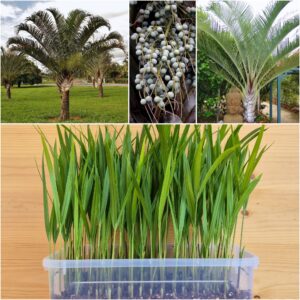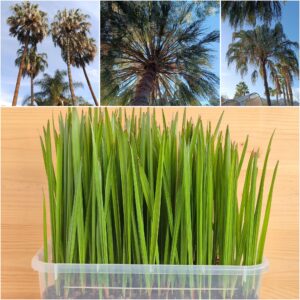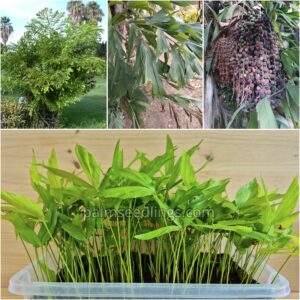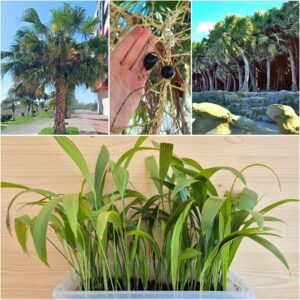Menu
12,00 € – 90,00 €
Product Details
Copernicia alba is a tall palm with a straight, slender trunk, stiff gray-green fan-shaped leaves, and clusters of small, dark fruits.
-Very healthy plants and actively growing.
-Size varies but you get the same plants you see in the photos.
-Shipped in an airtight bag in a solid box, so they don’t get damaged or dried out during shipping.
Select Quantity
*Shipping cost is calculated automatically in the cart after adding the products.
Click here to learn about how we ship; packaging, shipping price, delivery time and more.
Copernicia alba, commonly known as the caranday palm or wax palm, is a tall, slender palm that can grow up to 12–18 meters (40–60 feet) in height. It has a straight, gray trunk and a compact crown of stiff, fan-shaped fronds that are bluish-green to silvery-gray and about 1 meter (3 feet) wide. The fronds are coated with a natural wax, and the palm produces small, yellowish flowers followed by round, black fruits.
Native to the forests of Paraguay, Bolivia, northern Argentina, and southern Brazil, the caranday palm thrives in clay-rich, periodically wet soils. It is highly drought-tolerant, resistant to wind, and very cold-hardy, withstanding temperatures down to about -8°C (18°F). Its durability and striking appearance make it suitable for reforestation, ornamental use, and challenging landscapes in subtropical and warm temperate climates.
| Weight | N/A |
|---|---|
| Quantity | 10 Seedlings, 100 Seedlings |




All rights reserved PalmseedlingsⓇ 2025.